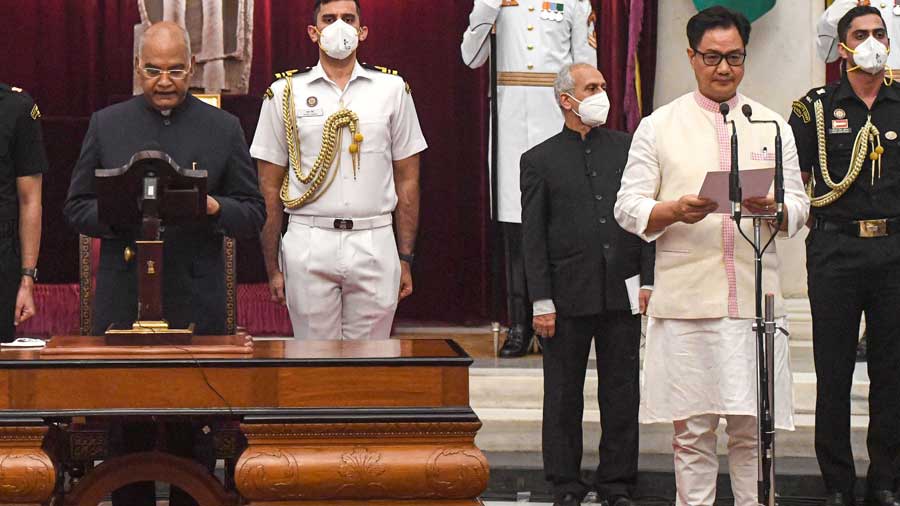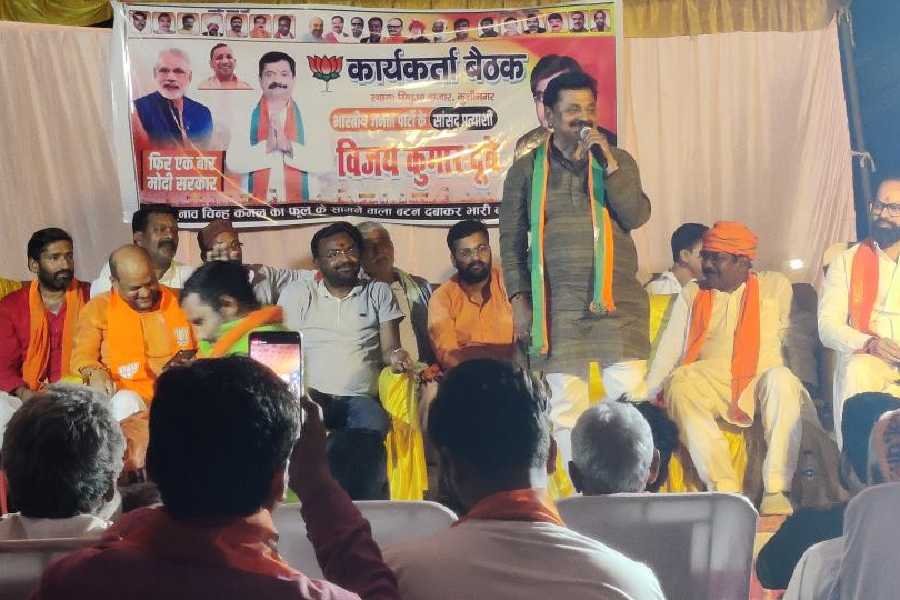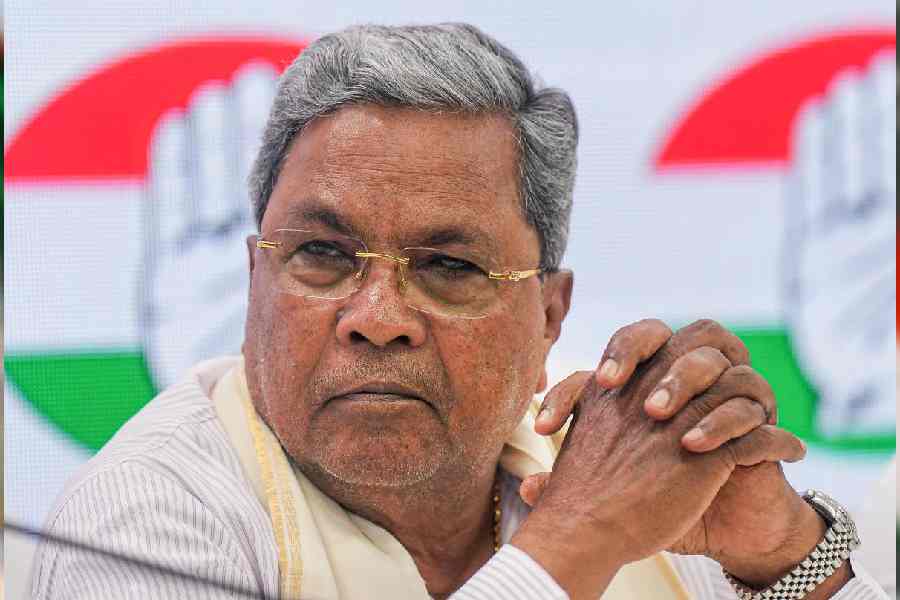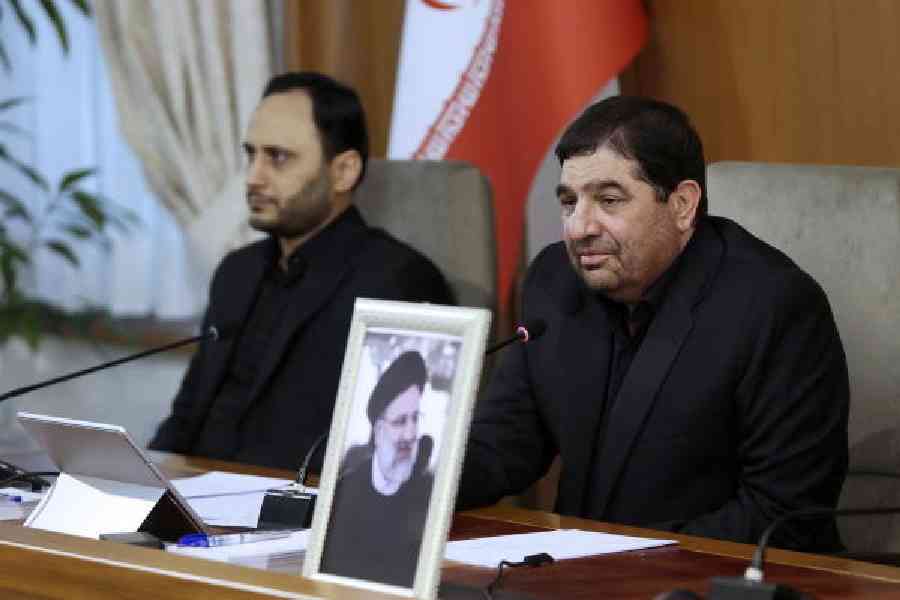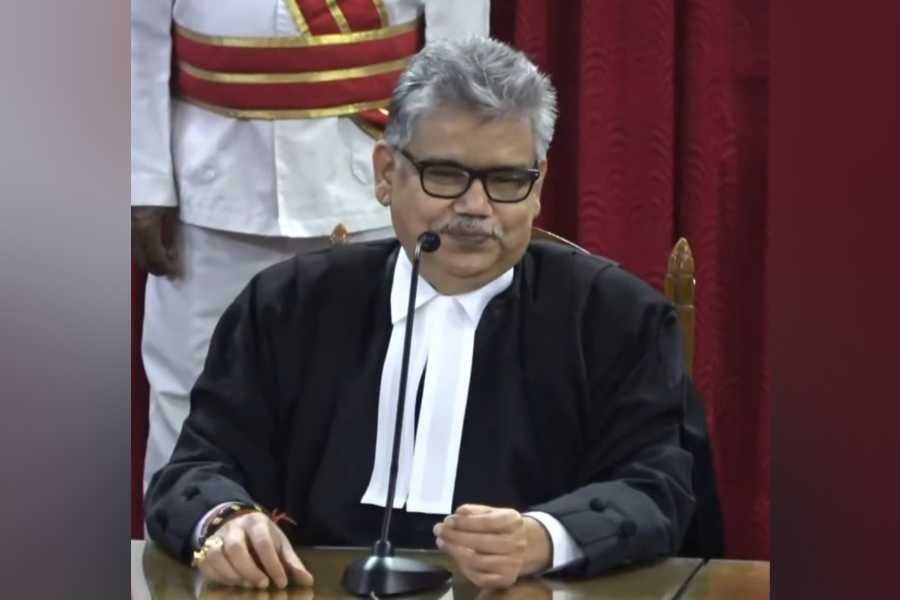In the recent reshuffle of the Union council of ministers, three more candidates from the Northeast were inducted as ministers, bringing up the region’s total to five. Two among them are of cabinet rank — Kiren Rijiju from Arunachal Pradesh, who was already minister of state (independent charge) for youth affairs and sports, has been elevated to Union minister for law and justice, while the former chief minister of Assam, Sarbananda Sonowal, was made Union minister of Ayush as well as of ports, shipping and waterways. The latter deal is obviously part of the settlement for Sonowal being made to forgo claims to continue as the chief minister of Assam after the state assembly elections in April in order to make way for the Bharatiya Janata Party’s blue-eyed boy in the state, Himanta Biswa Sarma.
The other three from the Northeast are Tripura’s Pratima Bhoumik (social justice and empowerment); Assam’s Rameswar Teli, who gets the petroleum and natural gas portfolio; and Manipur’s Rajkumar Ranjan Singh (foreign affairs and education). All are ministers of state without independent charge.
Much has already been written about the possible reasons for this mid-term reshuffle, but in the Northeast, the excluded states rather than the included seem to indicate a more interesting story of the BJP’s anxiety about its future prospect in the region. Of the seven northeastern states (excluding Sikkim), four are BJP-ruled and all the five ministers named are from these states. This is understandable. The three excluded states — Nagaland, Meghalaya and Mizoram — are predominantly tribal and Christian states, and the signs seem to indicate that the BJP is giving up hope of ever becoming the dominant party here. This is in spite of the fact that the BJP is currently piggyback riding on state parties to share power in Nagaland and Meghalaya.
In Nagaland, the party has 12 legislative assembly members in the House of 60, but this was possible only because of the seat-sharing arrangement with the Nationalist Democratic Progressive Party of the chief minister, Neiphiu Rio. In Meghalaya, the BJP has two MLAs, but is in the ruling coalition headed by the National People’s Party led by the chief minister, Conrad Sangma. In Mizoram, now ruled by the Mizo National Front under the leadership of Zoramthanga, the BJP managed to win only one seat.
If this is the BJP’s Northeast anxiety, the message in the recent ministerial reshuffle seems to be that it is looking to consolidate its base in the three states in which it feels its ideology of Hindutva can take root. In the Tripura, Arunachal Pradesh and Assam assemblies, the party is a little sure-footed. Manipur is where it is likely to face some uncertainty. In the last assembly election in February 2017, it won only 21 seats, behind the Congress’s 28 in the House of 60. Yet it could form the government through means fair and foul, and with liberal help from the governor, Najma Heptulla. The party at that time also had to give away eight cabinet berths to partners to secure their support, leaving only four, including that of the chief minister, for those who won on BJP tickets to share, causing a lot of heartburn in the party. Now that the next elections are due in seven months, the party obviously feels the need to create fresh goodwill amongst the electorate and confidence among its putative candidates. The inclusion of a member of parliament from the state in the Union ministry would partly be a strategy towards this. Judging by the general euphoria generated, the strategy does seem to be having the desired effect for now.
The choice of Ranjan would also be to address other concerns. As an MoS without independent charge, he would only be handling specific tasks within the two ministries he is placed in. He is a seasoned academic who specialized in geography and had served as registrar of Manipur University before retirement. He is also known for his interest in issues related to the India-Myanmar border. As MoS for foreign affairs, he could be asked to handle Indo-Myanmar cooperation in border affairs, including counter-insurgency measures. Considering the nature of insurgency in the Northeast — in Manipur above all — this can be a daunting and sensitive mission. Before him, another MP from the state, Meijinlung Kamson, had been made MoS for home affairs during 1995-1996, while Rajesh Pilot was the Union minister for internal security, and it is significant that it was during this period that the legwork for the ceasefire with the Naga insurgent group, the National Socialist Council of Nagalim (Isak-Muivah), which commenced in 1997, was initiated. It is reasonable to anticipate then that with Ranjan in charge, the Centre may be hoping for such breakthroughs with regard to some or all Manipur insurgent groups still at large.
As MoS for education, Ranjan is likely to be asked to explore the possibilities of upgrading the presence of northeastern history in the national school and college syllabi. This, too, is unlikely to be a cake-walk, considering the entangled nature of much of the region’s history. The recent controversies over the National Register of Citizens, and the Citizenship (Amendment) Act as well as the many claims of exclusive ethnic identities, lands and homelands, are some indicators of the likely roadblocks ahead.
Pradip Phanjoubam is editor, Imphal Review of Arts and Politics

